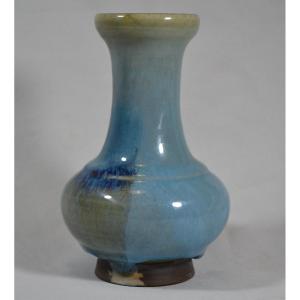Ceramic wares were integral to daily life at the time. The green-glazed ceramics in China are known as "qingci," a type of celadon that originated in Zhejiang during the Eastern Han Dynasty but can trace its roots back to the Shang Dynasty.
Of the many divine birds in Asian mythology, the Chinese phoenix, or “凤凰” (Feng Huang), is among the most revered. In Chinese culture, the phoenix symbolizes high virtue and grace and is considered the king of all birds. Historically, males were referred to as "Feng" (凤) and females as "Huang" (凰), but during the Yuan Dynasty, the phoenix became associated with femininity. The Chinese phoenix first appeared on pottery over 8,000 years ago and was believed to live atop the Kunlun Mountains. Traditionally, the Feng Huang represented the empress and adorned her clothing and jewelry. Today, the phoenix remains a highly respected symbol in China.
Antique ceramics from the Song Dynasty period are highly prized by collectors and enthusiasts of ancient Chinese ceramics.
As an example, a similar bowl was sold at auction in Spain https://www.subastasdarley.com/en/salas/lote/olive-green-glazed-dragon-bowl-northern-song-dynasty-960-1127/35/56479
Dimensions: Height 4.3 cm, top diameter 18.5 cm, base diameter (including foot) 20.5 cm, weight 628 grams.
Condition: Very good antique condition with no chips, cracks, crazing, nicks, or repairs.
Please carefully review the accompanying photographs, as they form an integral part of this description. The item will be shipped with full tracking and insurance. Please note that shipping costs include labor, packaging, and postage.










































 Le Magazine de PROANTIC
Le Magazine de PROANTIC TRÉSORS Magazine
TRÉSORS Magazine Rivista Artiquariato
Rivista Artiquariato